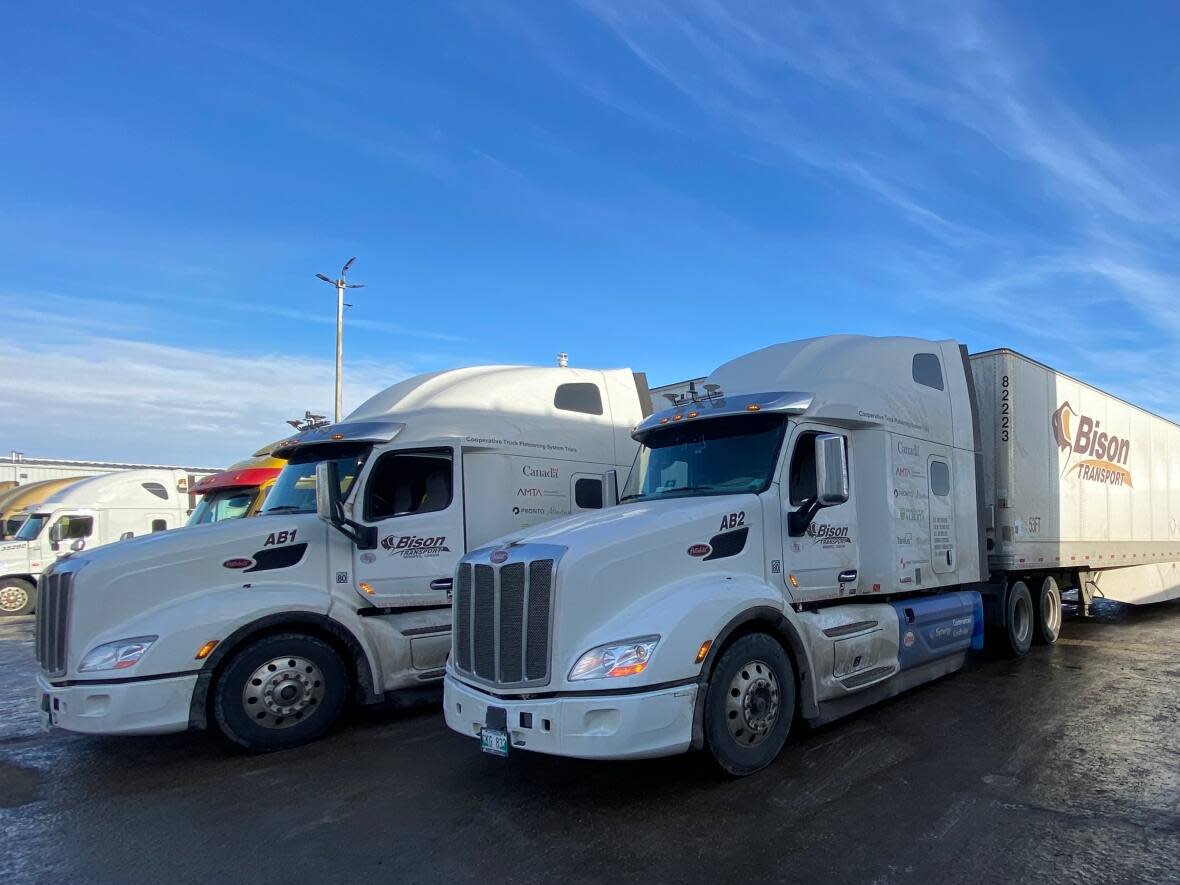Alberta semi-automated truck convoys didn't save fuel but tech still has promise, researchers say

- Oops!Something went wrong.Please try again later.
Researchers from the University of Alberta say a series of tests on the Queen Elizabeth II Highway show some of the challenges and opportunities associated with autonomous truck driving in Canada.
A team of researchers and partners tested truck platooning — convoys of two or more wirelessly connected trucks that travel relatively close together — in the winter of 2022.
The study was run by the Alberta Motor Transport Association (AMTA) and received $2.3 million in funding from Transport Canada.
The tests involved two semi-trailer trucks, nicknamed Daisy and Lily, which travelled between Edmonton and Calgary on the QEII 41 times. Platooning was used outside both cities' limits, between Airdrie and Leduc.
Both trucks had drivers from Bison Transport and were retrofitted with automated elements, like lane centring and adaptive cruise control. Because the trucks were wirelessly connected, the follower truck could automatically adjust its position, based on the lead truck's information.
Luo Jiang, a U of A PhD candidate in mechanical engineering who was involved in the research, said platoons can benefit from aerodynamic drag reduction, leading to better fuel efficiency and fewer emissions.
The team found that the technology worked safely, even when the trucks were driving in –27C and on snow-covered roads, but the efficiency benefits of platooning did not pan out.
"We did not see any substantial benefits of fuel saving," said Mahdi Shahbakhti, an associate professor of mechanical engineering at the U of A and the director of the Energy Mechatronics Lab.
Shahbakhti said there were some fuel savings for the follower truck when it was travelling on flat sections of the highway, but it consumed more fuel than the lead truck when on hillier terrain.
Cars cut in between the two trucks and the follower truck tended to brake more often, which increases fuel consumption, he said.
Jiang and his colleagues have published three academic papers on the Alberta trials — two of them this year — and he plans to present test results at the International Conference on Intelligent Transportation Systems in Edmonton in September.
The project was also a finalist last summer for an industry award for technology achievement.
Shahbakhti said platooning could bring more benefits during the summer months, if road conditions are safer and trucks could travel closer than three seconds apart.
The benefits could also increase as the level of automation does, he said, especially if automated trucks could travel in designated lanes.
Robert Harper, president of the AMTA, said platooning is promising, but more tests are needed.
"They have some limitations and we just have to figure that out in the future," he said.
Harper said the AMTA hopes to run another study involving buses in the Fort McMurray area and he knows of companies testing platooning technologies internally.
Driverless grocery trucks have been on the roads since 2022 in Toronto, moving items between Loblaw distribution hubs and retail locations.
Rich Steiner, vice president of government relations and public affairs for Gatik, which operates the trucks, said Ontario is "light years" ahead of every other province, including Alberta, when it comes to creating a regulatory landscape for autonomous vehicles.
South of the border, he said, 28 states currently allow for driverless deployment.
Steiner said more autonomous truck driving could lead to higher-frequency deliveries and lower delivery costs for consumers.
"We hope that that is something which is in Canada's future," he said.

